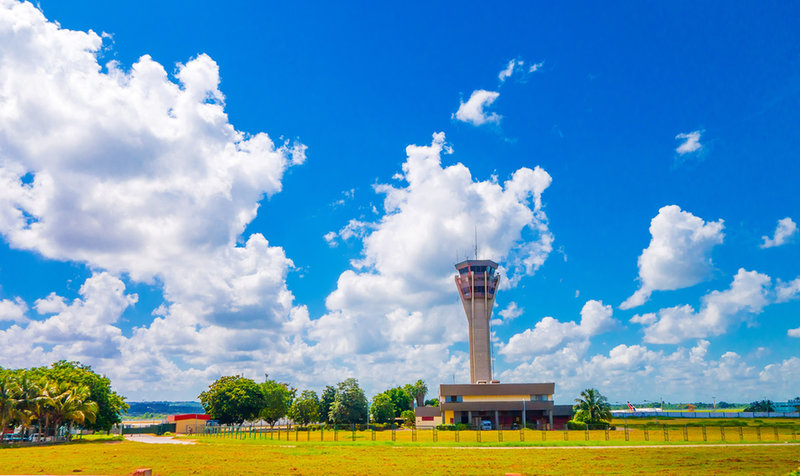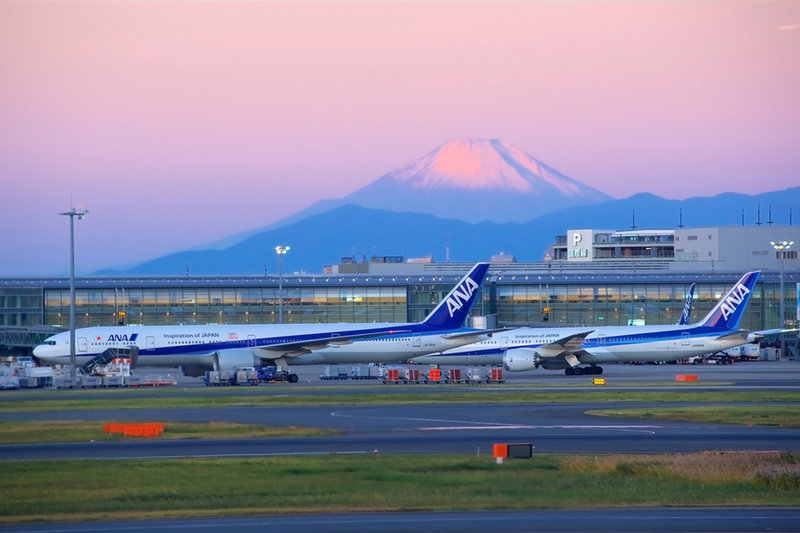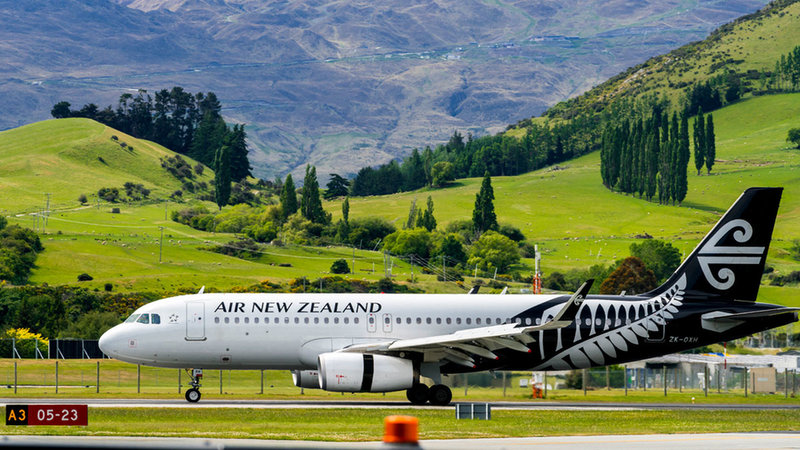REGIONAL FOCUS
How has Covid-19 affected islands that depend on aviation?
While the pandemic’s impact on the global aviation sector has been thoroughly discussed, little is known about the economic impact on economies that deeply rely on aviation as a means of connecting with the rest of the world. Ilaria Grasso Macola profiles how the pandemic unfolded on five islands and how their aviation sectors dealt with the pandemic.
Image: copyright
Globally, air transport only contributes 0.3% to the world economy, according to the Organisation for Economic Cooperation and Development. However, the sector becomes extremely important when considering the bigger picture, because of its links not only to upstream sectors such as aircraft manufacturing or airports but also to downstream industries such as services trade.
When the Covid-19 pandemic hit and brought air transport down by 90%, the economic ripple-effect was felt worldwide, in countries both big and small. Island economies (in particular small islands) were hit particularly hard because of their degree of openness, their dependence on other countries’ economic performance and a small economic base.
According to a report by the UN Department of Economic and Social Affairs, small island economies’ GDP will shrink by 4.7%, compared to a global average of 3%.
Whilst the macroeconomic impact of Covid-19 on small islands has been researched, what about larger islands and their economies?
Cuba: increasing safety at a cost
Cuba’s air traffic is set to increase as a result of the country restarting commercial operations on 15 November. As reported by Cuba’s official news agency, Prensa Latina, the traffic volume will not immediately recover, sitting at 40% less compared to pre-Covid-19 levels.
Cuban Civil Aviation Corporation president Roberto Peña commented that even though travellers’ reduced movement hit the island as much as other countries, it should go back to pre-Covid-19 numbers by 2023.
As reported by Civil Aeronautics Institute president Brigadier General Armando Luis Daniel Lopez, before Covid-19 hit 60 companies around the world were flying in and now numbers are coming back. According to Daniel Lopez, 34 airlines from Europe, Latin American, the Caribbean and North America have asked permission to resume flights.
With only 8,906 cases and 136 deaths, Cuba was the most successful country in Latin America in dealing with the pandemic. The country, nicknamed Latin America’s New Zealand for its successful response, closed its border on 23 March for seven months, reopening them in November.
The move helped save thousands of lives, but damaged the island’s economy, which was already in a dire situation because of mismanagement and US sanctions.
According to theNew York Times, the halt of tourism triggered an economic crisis that resulted in food shortages where people had to queue for eight to ten hours in government-run supermarkets. To invite travellers back to the island, the Cuban Government has decided to give tourists a Covid-19 test on arrival, levying a tariff to cover the costs of the practice and the increased sanitary protocols.

Credit: Fotos593 / Shutterstock.com
Iceland: surviving until the next high season
After containing the first and second wave of Covid-19, Iceland is currently going through a third wave, with 186 active cases at the time of writing.
Despite having relatively fewer cases compared to other countries, Covid-19 had a severe impact on Iceland’s economy and especially its air transport sector, which – with 72,000 jobs – contributes to 38.3% of the country’s GDP.
Icelandic Travel Industry Association managing director Jóhannes Þór Skúlason explains that, given that most tourists arrive via air, the lack of air travel had a huge impact on tourism.
“The only period where we have been able to keep up some semblance of travel was the summer, when quarantine regulations were relaxed enough so that people could travel to Iceland without spending time in quarantine,” says Skúlason. “After 19 August, quarantine rules were re-introduced and have led to the collapse of nearly all travel to Iceland.”
The industry’s only goal, explains Skúlason, is to survive until next summer, when the high season and the positive development of vaccines will help aviation and tourism return to normal.
To do so, the Icelandic Government has implemented a stimulus package that includes supportive loans and specific grants to companies. “The government has also been helping to pay for up to half of employees’ salaries,” he adds. “So there have been quite strong measures going on this year and we’re hoping that these will help most of the companies live or survive until the next high season.”

Keflavik International Airport in 2016 Credit: f11photo / Shutterstock.com
Japan: travel deals and public stock offerings are needed
On 24 November, the Japanese and Chinese Foreign ministers agreed to start resuming travel between the countries to help their hardest-hit sectors, including air travel and tourism.
Under the deal, Japan and China will establish a business track programme, which will allow travellers to have some liberties during their quarantine periods. Japan has struck the same deal with other countries, including Singapore, South Korea and Vietnam.
Supporting 1.4 million jobs and contributing to $118bn of gross value, air transport is a major contributor to Japan’s economy but has been hit hard by the Covid-19 pandemic. According to market data statistics portal Statista, between March and June, the volume of air travel sales in Japan decreased between 76% and 97%.
Japan’s main carriers are anticipating record losses because of the halt in air transport. Japan Airlines is expected to register a loss between JPY240bn ($2.3bn) and JPY270bn ($2.5bn), whilst All Nippon Airways will register an expected loss of JPY510bn ($4.9bn).
To stay afloat, companies reverted to a series of economic measures, including public stock offerings. As reported by the Japan Times, Japan Airlines raised JPY167.9bn through a public stock offering at the beginning of November, selling 91 million new shares to general shareholders and nine million to a designated party.
The proceeds, which will help the company stay afloat and cover replacement costs for its fleet, will be used to reduce interest-bearing debt and buy fuel-efficient flight equipment. The airline will also use the money to help low-cost carriers.

Tokyo Haneda Airport in 2017. Credit: PAUL ATKINSON / Shutterstock.com
Mauritius: voluntary administration to save aviation
The economic impact of Covid-19 on air transport was particularly felt in islands such as Mauritius, where the main carrier Air Mauritius reported a loss of MUR9.5bn ($238m) because of the halt in tourism.
After cutting its staff by 50% to mitigate the impact of the pandemic, Air Mauritius entered voluntary administration – a business manoeuvre where a third party is put in charge of a company to save it from bankruptcy.
“Unfortunately, travel restrictions and the closure of borders in all our markets and cessation of all international and domestic flights in an unprecedented crisis, has led to a complete erosion of the company’s revenue base,” read a statement by the Air Mauritius board of directors.
“In these circumstances, it is expected that the company will not be able to meet its financial obligations in the foreseeable future. The board, therefore, took the decision to place the company under voluntary administration in order to safeguard the interest of the company and that of all its stakeholders.”
Even though commercial operations were halted – only resuming in May – cargo and humanitarian operations were maintained during the whole lockdown period.

An Air Mauritius Airbus A319 in February 2020. Credit: Markus Mainka / Shutterstock.com
New Zealand: aviation’s recovery is still far away
With slightly more than 2,085 cases and 25 deaths at the time of writing, New Zealand’s response to Covid-19 has been hailed around the world for its swiftness and efficacy, with many applauding Prime Minister Jacinda Ardern’s empathetic but firm leadership.
At the beginning of the pandemic, Ardern’s Labour government gave the aviation sector a support package of NZD600m ($422.8) to weather the storm.
The relief package included NZD330m for the International Air Freight Capacity scheme, which helps the country maintain its economic links with global markets via aviation and was extended until the end of March 2021, and NZD30m for the Essential Transport Connectivity scheme, which provides support to the transport sector for the short and medium term.
Despite the government’s help, the aviation sector is still struggling to get back on its feet. In August, the country’s carrier, Air New Zealand, reported its first financial loss, of NZD87m, in 18 years.
“The 2020 financial year has been a year of stark contrast,” commented Air New Zealand chairman Dame Therese Walsh. “Air New Zealand had a solid start to the year and was focused on driving profitable growth into the second half. Now, nearly six months following the declaration of a global pandemic, the $87m loss we are reporting today, our first loss in 18 years, reflects the quick and severe impact Covid-19 has had on our business.”
As a result of the pandemic-driven economic loss, the company had to adjust its business model, lowering the cost base and increasing domestic and cargo services.
“Faced with such a swift decline in revenue as lockdown restrictions were implemented and borders were closed, we took immediate steps to secure $900m in additional funding, and drastically reduced our cash burn in the knowledge that, for a time, we would be a much smaller business than we had been pre-Covid-19,” she added.
In September, the economic situation was still uncertain, prompting the airline to ground its Boeing 777 fleet for a year.

Queenstown Airport in 2016. Credit: Blue Planet Studio / Shutterstock.com